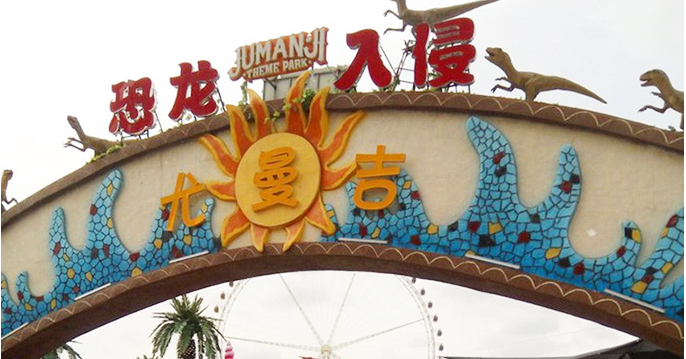- Albanian
- Arabic
- Belarusian
- Bengali
- Czech
- English
- French
- German
- Hebrew
- Hungarian
- Indonesian
- irish
- Italian
- Japanese
- kazakh
- Persian
- Russian
- Thai
- Uzbek
- Vietnamese
roller coaster types
The Thrilling World of Roller Coaster Types
Roller coasters are one of the most exhilarating attractions in amusement parks, promising thrills, screams, and unforgettable memories. They come in various shapes and sizes, each offering a unique experience that caters to different tastes and preferences of riders. This article dives into the diverse types of roller coasters, examining their distinct features, mechanisms, and the thrill they provide.
1. Wooden Roller Coasters
One of the oldest types of roller coasters, wooden coasters are characterized by their wooden structure and traditional design. These coasters often have a nostalgic feel and are known for their rickety movements, creaky sounds, and the scent of freshly cut wood. The classic wooden coaster features steep drops, sharp turns, and unbanked curves that create a unique sense of speed and airtime. Iconic examples include the Coney Island Cyclone and the Kingda Ka in New Jersey. The charm of wooden coasters lies in their simplicity and the adrenaline rush they provide, making them a favorite among traditionalists.
2. Steel Roller Coasters
Emerging in the 1970s, steel roller coasters revolutionized the amusement park industry. With their smooth rides and advanced features, they offer a far more dynamic experience compared to their wooden counterparts. Steel coasters can incorporate inversions, loops, and corkscrews, providing thrilling elements that wooden coasters cannot. Innovations such as launch mechanisms allow for rapid ascents without the need for a traditional lift hill. Iconic steel coasters include the “Steel Vengeance” at Cedar Point and “Fury 325” at Carowinds, each offering unique designs and breathtaking speeds that attract thrill-seekers from around the globe.
Inverted coasters take the ride experience to new heights by flipping riders upside down. The seating arrangements are designed so that the train hangs beneath the track, offering a completely different perspective to riders. With their twists, turns, and inversions, inverted coasters provide a feeling of weightlessness and freedom. Famous examples include “Batman The Ride” and “Montu,” known for their fast-paced loops and sharp maneuvers. The design of inverted coasters allows for an immersive experience, giving riders the sensation of flying.
roller coaster types

4. Dive Coasters
Dive coasters are known for their dramatic drops and immersive experiences. Riders are often taken to a high peak before being paused at the edge, building suspense before plummeting straight down. This core feature creates a sense of fear and thrill that is hard to replicate in other coaster types. Griffon at Busch Gardens Williamsburg exemplifies a dive coaster, allowing riders to experience the sensation of freefall as they plunge vertically at an angle. The combination of height, speed, and sudden drops makes dive coasters a must-try for thrill-seekers.
5. Floorless Roller Coasters
Floorless coasters give a sense of vulnerability and excitement by removing the floor from beneath the riders’ feet. This design not only adds to the thrill but also enhances the feeling of speed and freedom. Riders can dip and soar without any physical restraints beneath them. Notable floorless coasters include “Medusa” at Six Flags Mexico and “Kraken” at SeaWorld Orlando. The combination of smooth curves and inversions, along with the sensation of dangling, captivates adventurers seeking a rush.
6. Launch Coasters
Unlike traditional coasters that rely on gravity to pull the train up a lift hill, launch coasters employ a jet propulsion system to catapult riders forward at astonishing speeds. This technology allows for instantaneous acceleration, creating intense G-forces that thrill enthusiasts. One of the standout launch coasters is “Top Thrill Dragster,” which features a vertical ascent and a rapid drop, reaching speeds of up to 120 mph. The thrill of being launched makes these coasters exhilarating for those who crave an adrenaline challenge.
Conclusion
With various types of roller coasters available, amusement parks provide thrilling experiences for every kind of rider, from the classic wooden coasters that offer nostalgia to high-tech steel designs with inversions and speed. Each type brings its own unique set of thrills, ensuring that the world of roller coasters remains an exciting and evolving landscape. Whether you are a fan of smooth steel rides or the rustic charm of wooden coasters, there is no denying that roller coasters will continue to be a vital part of our pursuit of extraordinary thrills.
-
Flume Ride-Hebei Zhipao Amusement Equipment Manufacturing Co., Ltd.|Thrilling Water Attraction&Customizable DesignJul.30,2025
-
Flume Ride - Hebei Zhipao Amusement Equipment | Water Coaster, Thrilling DescentJul.30,2025
-
Flume Ride - Hebei Zhipao | Thrilling Water AttractionJul.30,2025
-
Flume Ride: Thrilling Water Attraction by Hebei Zhipao|Log Flume Manufacturers&Flume Ride DesignJul.30,2025
-
Flume Ride-Hebei Zhipao Amusement Equipment Manufacturing Co., Ltd.|Thrilling Water Coaster, Safe DesignJul.30,2025
-
Flume Ride-Hebei Zhipao Amusement Equipment Manufacturing Co., Ltd.|Thrilling Water Attraction, Safe DesignJul.30,2025
